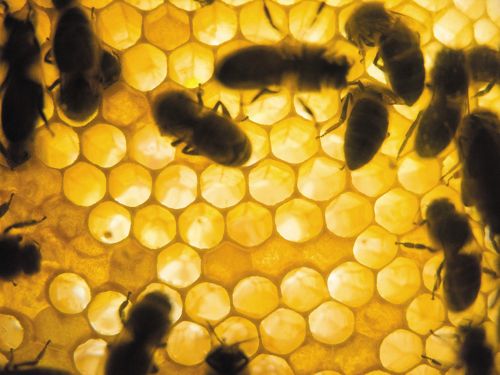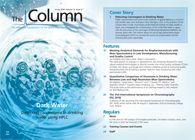LC–MS and GC–MS Analysis of Honeybee Pesticides
Liquid chromatography coupled to tandem mass spectrometry alongside gas chromatography tandem mass spectrometry has been used to analyze 200 pesticides and pesticide metabolites in honeybees.
Photo Credit: David Blaikie/Getty Images

Liquid chromatography coupled to tandem mass spectrometry (LC–MS–MS) alongside gas chromatography tandem mass spectrometry (GC–MS–MS) has been used to analyze 200 pesticides and pesticide metabolites in honeybees.1
There has been a global decline in honeybee numbers in recent years. This phenomenon is known as colony collapse disorder (CCD). In Europe, data from the EPILOBEE project has shown that yearly colony mortality rates reported between 2012 and 2014 reached 36%.2 In the USA annual colony losses reported by beekeepers peaked at 45%.3 Pesticides are widely used as plant protection products (PPPs) in agriculture. In Poland, there are more than 1500 PPPs authorized to use, which will contain at least one of 200 different pesticides - all diverse in terms of chemical structure and toxic effects on bees.
The study team aimed to develop and validate an analytical method for the determination of possible pesticides currently approved to use within the European Union and their metabolites in honeybee samples. Two sources of exposure needed to be taken into account: pesticides used in agriculture as PPPs, and pesticides intentionally introduced into hives by beekeepers as acaricides to control the Varroa destructor mite, an external parasitic mite that attacks honeybees.
Sample preparation was based on a buffered QuEChERS method. Samples of bees were extracted with acetonitrile containing 1% acetic acid and cleaned using dispersive solid-phase extraction (dSPE). The majority of pesticides, including neonicotionoids and their metabolites, were analyzed by LC–MS–MS but some pesticides, such as pyrethroid insecticides, were analyzed by GC–MS–MS. The procedure was validated according to the Guidance document SANCO/12571/2013 at four concentration levels: 1 ng/g, 5 ng/g, 10 ng/g, and 100 ng/g bees and verified in the international proficiency test. The method was used to investigate more than 70 honeybee poisoning incidents. The analysis of bee samples spiked at the limit of quantification (LOQ) showed about 98% mean recovery value and 97% of analytes showed recovery in the required range of 70–120% and RSDr (precision) below 20%. The LOQs of pesticides were in the range of 1–100 ng/g.
This QuEChERS-based method allowed sensitive and reliable simultaneous analysis of 200 pesticides and pesticide metabolites in honeybees, which, according to the authors, makes this an important tool for establishing which pesticides could have a negative impact on bee health. - K.M.
References
- Tomasz Kiljanek et al., Journal of Chromatography A1435, 100–114 (2016).
- M. Laurent, P. Hendrikx, M. Ribiere-Chabert, et al., A pan-European epidemiological study on honeybee colony losses 2012–2014, European Union Reference Laboratory for honeybee health, http://ec.europa.eu/food/animals/live_animals/bees/docs/bee-report_2012_2014_en.pdf.
- K.V. Lee, N. Steinhauer, K. Rennich, et al., Apidologie 46(3), 292–305 (2015).

Analytical Challenges in Measuring Migration from Food Contact Materials
November 2nd 2015Food contact materials contain low molecular weight additives and processing aids which can migrate into foods leading to trace levels of contamination. Food safety is ensured through regulations, comprising compositional controls and migration limits, which present a significant analytical challenge to the food industry to ensure compliance and demonstrate due diligence. Of the various analytical approaches, LC-MS/MS has proved to be an essential tool in monitoring migration of target compounds into foods, and more sophisticated approaches such as LC-high resolution MS (Orbitrap) are being increasingly used for untargeted analysis to monitor non-intentionally added substances. This podcast will provide an overview to this area, illustrated with various applications showing current approaches being employed.
PFAS Analysis in Practice: A RAFA 2024 Interview with Stefan van Leuwen
January 10th 2025At the Recent Advances in Food Analysis (RAFA) conference in 2024, LCGC International sat down with Stefan van Leuwen of Wageningen Food Safety Research to discuss his research, which addresses emerging challenges in circular food production, focusing on the risks posed by pollutants when waste and by-products are repurposed in food systems.